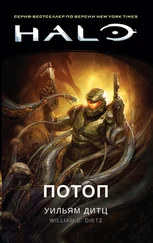They were well inside the fence by then but a long way from the depository, as fresh troops surged out to meet them. Sloan tripped and fell. As he got back on his feet, he realized that the defenders were closer. Much closer. McKinney was to the right, firing from one knee. The private to Sloan’s left was shooting at targets to his left. Sloan realized that he had to hold the center as an enemy soldier charged at him!
The shotgun seemed to fire itself, and the load of double-ought buck blew half of the man’s face away. Sloan was thinking about what he’d done, and trying to come to terms with it, when soldiers appeared to either side of him. “We’re pulling back, sir,” one of them said. “The captain wants you to…”
Sloan never got to hear the rest of it as a bullet hit the corporal and turned him around. Sloan caught him and helped the other soldier drag the noncom back to the fence. Bullets buzzed and snapped all around them as McKinney paused to return fire.
The trucks were parked in a line outside the fence—and troops were digging fighting positions behind them. Sloan and the private half carried the corporal around the front of a six-by-six and laid him down. A medic appeared. “I’ve got this,” he said as he went to work.
Sloan was exhausted. He sat down and let his weight rest on a gigantic tire. McKinney came to join him. “What happened?” Sloan demanded.
“We got our asses kicked,” McKinney replied.
“Shit.”
“Yes, sir. You did good though… Word of that will get around.”
Sloan felt a momentary flush of pleasure, followed by sorrow. More people were dead on both sides. And all of them were Americans.
A full six hours passed before Colonel Foster was in a position to report. He, along with Sloan, the presidential party, and senior officers were gathered in the underground command post. Foster’s expression was grave. “I have good news, and I have bad news. Here’s the good news. We cut the base off from the depository. And, in spite of repeated counterattacks, we kept enemy forces from linking up again.
“Secondly, we kept General Cox’s forces bottled up inside their defensive positions. And, since they know we can drop missiles on them whenever we choose to, they’re likely to stay where they are. Thirdly, we were able to push the forces around the depository back, giving us control of the ground up to the fence. It isn’t safe to stroll around in that vicinity mind you… General Cox has some excellent snipers.”
Foster’s eyes swept across the faces in front of him. “Here’s the bad news. Our attempt to take the depository failed—and we lost sixty-two soldiers. Another sixteen were wounded, and two aren’t likely to survive. What we have now is a standoff… One that could last for a long time unless we’re willing to drop bombs on them or use missiles. And even though that might be the logical thing to do, it might be perceived as draconian since Cox and her soldiers are American citizens. The last thing we want to do is create another Alamo that the Confederates can rally around.”
A discussion ensued. But when the meeting came to an end twenty minutes later, nothing had changed, and Sloan felt depressed. He went back to the tiny bedroom to lie down. He was exhausted, and it didn’t take long for sleep to pull him down.
When Sloan woke up four hours later, it was with the sense that he’d been dreaming. But about what ? An explosion. He’d been in combat, so that made sense. No, there was more to it than that. Something important.
Sloan lay there, staring at the ceiling, trying to remember. Suddenly he had it. The siege of Petersburg in 1864! Sloan sat bolt upright, swung his feet over onto the pea-gravel floor, and hurried to pull his boots on. He had to tell Foster.
The officer was skeptical to say the least. But Sloan was the commander in chief and, for the very first time since becoming president, chose to assert that authority. Foster was forced to capitulate.
It took three weeks to build a temporary structure, bring the drilling machine in under the cover of darkness, and put the Roadheader to work. In his role as Secretary of Energy, Sloan had gone down into a dozen Kentucky coal mines where he’d met hundreds of workers and seen firsthand what their machines were capable of. And that was to bore tunnels like the one Union forces drove in under the Confederate lines during the Battle of the Crater in 1864.
It was a hand-dug tunnel, the purpose of which was to place explosives under the enemy troops and kill as many of them as possible. That would open the way for an infantry assault and bring the siege of Petersburg to an end.
Unfortunately, the follow-up attack was a complete disaster, which caused the deaths of 504 Union soldiers and left 1,881 wounded. Some were captured as well.
But Sloan’s plan was different. After driving a tunnel in past the enemy’s outer defenses, handpicked troops would surge up out of the ground and attack the enemy from the rear.
At that point, the defenders located in, and on top of, the flat-roofed depository would be able to fire at them… But not without hitting their comrades as well. In the meantime, they would be taking heavy fire from .50 caliber machine guns and AT4 rockets. A combination that was guaranteed to keep their heads down.
The plan should work. Nevertheless, Sloan felt something akin to a lead weight in the pit of his stomach as the appointed hour arrived, and the Roadheader was withdrawn. A tremendous amount of effort had gone into smuggling timbers in to support the tunnel’s ceiling. But there was always the chance of a cave-in that would not only kill the coal miners who were running the Roadheader, but reveal the tunnel’s existence. Either possibility would be disastrous. So it was important to use the passageway immediately.
At 0427, Sloan was standing at the back of the command center watching and listening. It had been his hope to go in with the troops, but Foster was opposed, as were the rest of them. Sloan might have dismissed their objections had it not been for McKinney. “I’m sorry, Mr. President,” he said. “But you’re not good enough for this mission. And if you screw up, it could cost lives. Is that what you want?”
It wasn’t what Sloan wanted. So all he could do was stand there and hope for the best as the feint went in, a platoon of Foster’s best boiled up out of the ground, and a short battle ensued.
The defenders were caught flat-footed, took heavy casualties, and couldn’t withdraw. When the survivors surrendered, that opened the way for one of Foster’s Bradleys to roll up the driveway and fire on the heavily armored door with its chain gun. Sloan could see greenish footage of the action on the main screen and could hear the vehicle commander’s voice. She said, “Open Sesame,” as her gunner blew the doors open.
Shouts of jubilation were heard in the command center—and Besom was there to congratulate Sloan. “Good work, Mr. President,” he said. “Here’s what I’m going to send out: ‘The fighting president strikes again! Based on a plan conceived by President Samuel T. Sloan, the army of the North recaptured Fort Knox, and the 130 billion dollars’ worth of gold bullion stored inside.’”
“You might want to wait until the battle is over before you send that out,” Sloan cautioned. “And don’t forget to give credit to Colonel Foster, his officers, and their troops.”
Besom looked resentful. “Of course… What do you take me for?” Then he ran off. To add the missing text? Probably.
Sloan wasn’t allowed to enter the depository until after sunup. By that time, General Cox had been found with a pistol near her hand and a single bullet wound in her temple.
Читать дальше

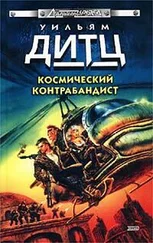
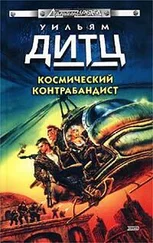

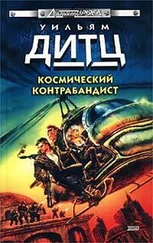
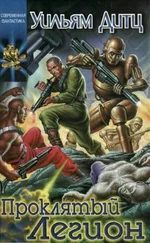
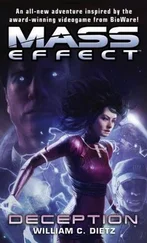

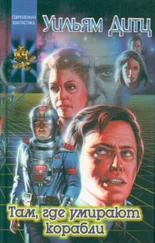
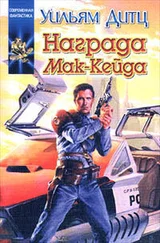
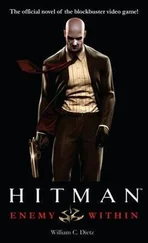
![Уильям Дитц - Избранные произведения в одном томе [Компиляция]](/books/389750/uilyam-ditc-izbrannye-proizvedeniya-v-odnom-tome-k-thumb.webp)
